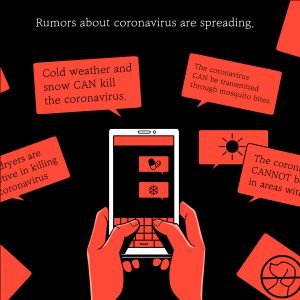Pandemic and Social Media

Only a couple of months back, we were living in an exquisite time, with everything going perfectly and no pandemic insight. The world, however, resounded with a recently discovered risk when the Chinese government cautioned of an infection emitting in one of its regions. Before long, it spread to nations around the world and was proclaimed as a pandemic by the World Health Organization on March 11, 2020. Looking at the statistics now, Corona Virus has already taken thousands of lives with millions infected.
It is not new that the world has been tormented by an infection like this. In fact, infections have been constant throughout the human race. The Black Death that erupted in the 13th century, The American Plague (16th Century), The Great Plague of London ( 1665-1666) and Marseille (1720-1723), Russian Plague ( 1770-1772), Philadelphia Yellow Fever Epidemic (1793), Flu Pandemic (1889-1890), Spanish Flu (1918-1920), Asian Flu (1957-1958), AIDs pandemic and Epidemic (1918 to date), H1N1 Swine Flu pandemic (2009-2010), are the examples of pandemics and epidemics that wiped huge populations and ravaged humanity. Amongst these, what makes Coronavirus so astounding is that it occurred at a time of technological progression and in the age of social media. The role of social media and its implications at the moment is astonishing.
To count the benefits, social media at this time of emergency has been a great source of real-time information. The update of the virus around the globe is now a tick away with the availability of various social media platforms like Facebook, Instagram, and Twitter. This is not only allowing individuals to assess the situations around the world but also helping them understand the seriousness of the issue and to prepare accordingly.

The Social Media platform has proved to be phenomenal in creating awareness of this deadly matter. Social activists have utilized various sources to convey educational messages to individuals. Celebrities, sportsmen, bloggers reached out to their fans to give them valuable safety tips and precautionary measures. In doing so, the platform has been instrumental in allowing timely measures to reach people even before the virus reached them. Had it not been the case, one can imagine the effort and time it would have taken to reach each doorstep or sending postal warnings.
One of the viable contributions that we could count on social media these days is the share of quarantine activities. A number of individuals posted their quarantine rituals to their followers. This included some renowned figures sharing their cooking, gardening, and exercising activities to wade off the stress of sitting idle. This, in a way, encouraged others to utilize their time in a productive way. Some celebrities like Amna Sheik and Sarwat Gillani came up with innovative ideas to engage children with tasks like arts and reading.
Importantly, where physical isolation has become a necessity today, social media platforms have come as a means of social connection. By staying in touch with our loved ones, social media has been a great emotional support at the moment. Resultantly, it has provided us all with mental health remedies.
On the whole, social media has acted as a means of global response by allowing stories to flow from one part to another. This has also created a unity as there is no single country or person who could claim immunity. Alongside, fundraising and other campaigns related to the pandemic have been easily administered given the nature and reach of social media.
On the flip-side, there exist some grey realities of the functioning of social media during the pandemic. The first one of these being the spread of misinformation. As social media reaches an exponential number of people so does information. Where real-time information is crucial, these platforms, without any mechanism for filtering, allowed misinformation and myths to flow. Apart from fake news, some individuals famed themselves by uploading baseless remedies and self-help tips. Already appalled by the pandemic, not every user cross-checks the sources and may start using the home remedies risking their lives. A recent example of this emerged in Iran where hundreds of people poisoned themselves to death believing it could cure the COVID infection.

Fear and panic are much-anticipated outcomes of any crisis. It wouldn’t be wrong to claim that social media has heightened both. The news of death trolls is already sickening these days and because of constant update and share of individual haunting stories make it even worsening. Together with this, the constant anticipation of upcoming crises like the recession is constantly feeding fears into the minds of people.
Apart, politicization, racism, and publicity have surfaced where a number of well-known personalities used the pandemic for the sake of attention-seeking. Amongst, the publicity of welfare works on social media is one to be named. In relation to racism, people blaming Chinese eating habits and President Trump referring to the pandemic as “China Virus” are the manifestations of how a deadly disease could be served to satisfy erroneous wills which were fueled by social media platforms.
The COVID-19 pandemic is a grave issue and calls for responsible behavior from each person. It is necessary that global precautionary measures of washing hands frequently, maintaining social distancing, and practicing healthy habits are ensured. Above all, it is the responsibility of each social media user to not allow panic buying, to share accurate information only, and to check sources of information before making it viral. It is highly recommended that only trustworthy channels of information are followed. The world is already in crises and it is our collective responsibility to not worsen it. Along with social distancing, we currently need to socially responsible.
AMJAD ALI